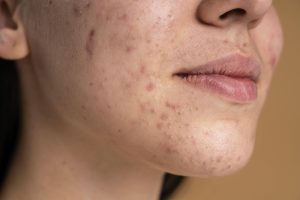Miami, Florida – Dr. Roger Ceilley, clinical professor of dermatology at the College of Iowa and former president of the American Foundation of Dermatology and the American Culture for Dermatologic Medical Procedure, provided more insight into the management of post-provocative hyperpigmentation in light of ongoing advancements in the treatment of hyperpigmentation.
Melasma, lentigines caused by exposure to sunshine, and post-provocative hyperpigmentation are among the most well-known types of hyperpigmentation, according to him.
Numerous conditions, including psoriasis, contact dermatitis, ingestion injuries, and skin inflammation, can cause post-provocative hyperpigmentation. It is frequently diagnosed in patients with hazier skin types and is more common in women.
According to Dr. Ceilley, “Post-provocative hyperpigmentation occurs after the skin has been aggravated for reasons unknown.” “It can cause skin inflammation in patients, especially those with more enigmatic skin types, on the odd chance that they already have it. Additionally, a patient can promote hyperpigmentation if they eat or scratch themselves.
“Hyperpigmentation may occur occasionally on the off chance that a patient has an adversely receptive reaction to something, such as contact dermatitis. In general, everything that aggravates can lead to persistent hyperpigmentation, especially in people with more uncommon skin types, he claims.
The managers
The patient’s underlying ailment continues to be the focus of the treatment.
Dr. Ceilley advises, “As a matter of some importance, you need to investigate whether there is anything that is generating the irritation or potentially developing grounds for aggravation. For instance, if a patient has skin inflammation, treating the skin inflammation is really necessary. You should first determine if they have another ailment that could cause hyperpigmentation and then address that before looking at different treatment options for the hyperpigmentation problem.
There has been occasional use of drugs called hydroquinones in the past. We have experimented with substance stripping and a variety of bleaching agents, but more recently, a medication that was approved for the treatment of melasma—a combination of hydroquinone, tretinoin, and fluocinolone—has proven effective in the management of post-provocative hyperpigmentation. Tri-Luma Cream is the name of this correct mixture, according to Dr. Ceilley.
The results of a clinical report showing increased vitality and reduced poisonousness of Tri-Luma Cream were presented by Dr. Ceilley.
According to him, “The review I discussed was basic data on an eight-week study where we used this blended product on patients who had post-provocative hyperpigmentation from skin break out.” “The majority of the review participants had more uncommon skin types. We had seldom any significant adverse events as a result of this strategy, and few patients left the review. The overall results are really encouraging; at around two months, about half of the patients were clear or nearly clear, and they appear to tolerate the treatment very well. I would anticipate that some of the patients will benefit from continued therapy because the post-provocative hyperpigmentation shade is much deeper than what is typically seen.
current medications
It makes logical, according to Dr. Ceilley, that current medications used to treat various forms of hyperpigmentation might also be applied to the treatment of post-provocative hyperpigmentation. However, Tri-Luma Cream is unquestionably more effective than other experts that have been employed in the past. You should Tri Luma cream buy online, which works incredibly effectively to treat melasma, is the optimum combination of three substances in the right amounts.
“The review that was conducted also compared Tri-Luma Cream to the combinations of tretinoin and fluocinolone and tretinoin and hydroquinone. Results showed that Tri-Luma Cream was more effective more quickly with comparable poisonousness to these various combinations,” he claims.
The dermatologist practicing
Dr. Ceilley emphasizes that professionals need to understand the significance of this issue in relation to practicing dermatologists.





